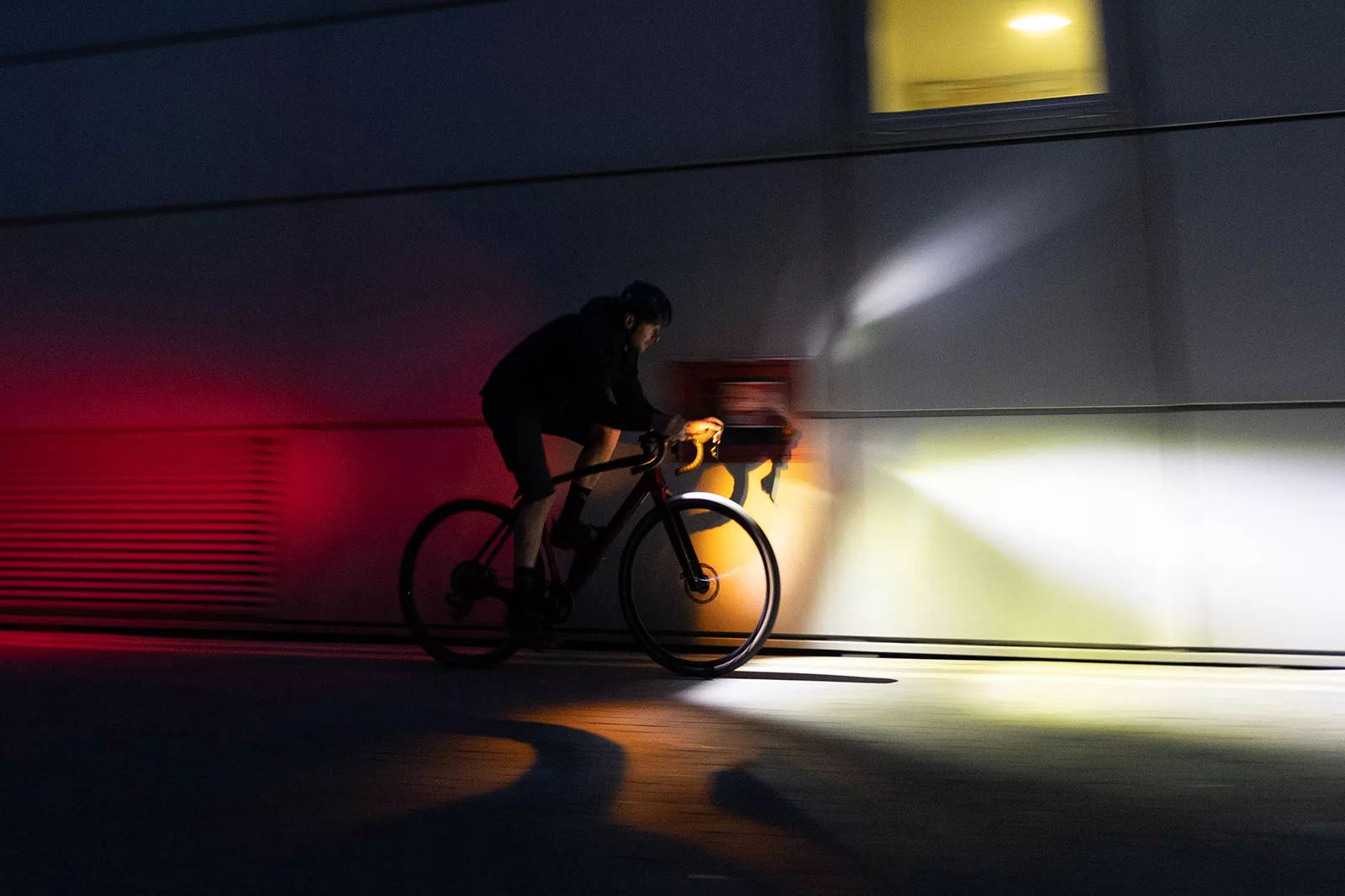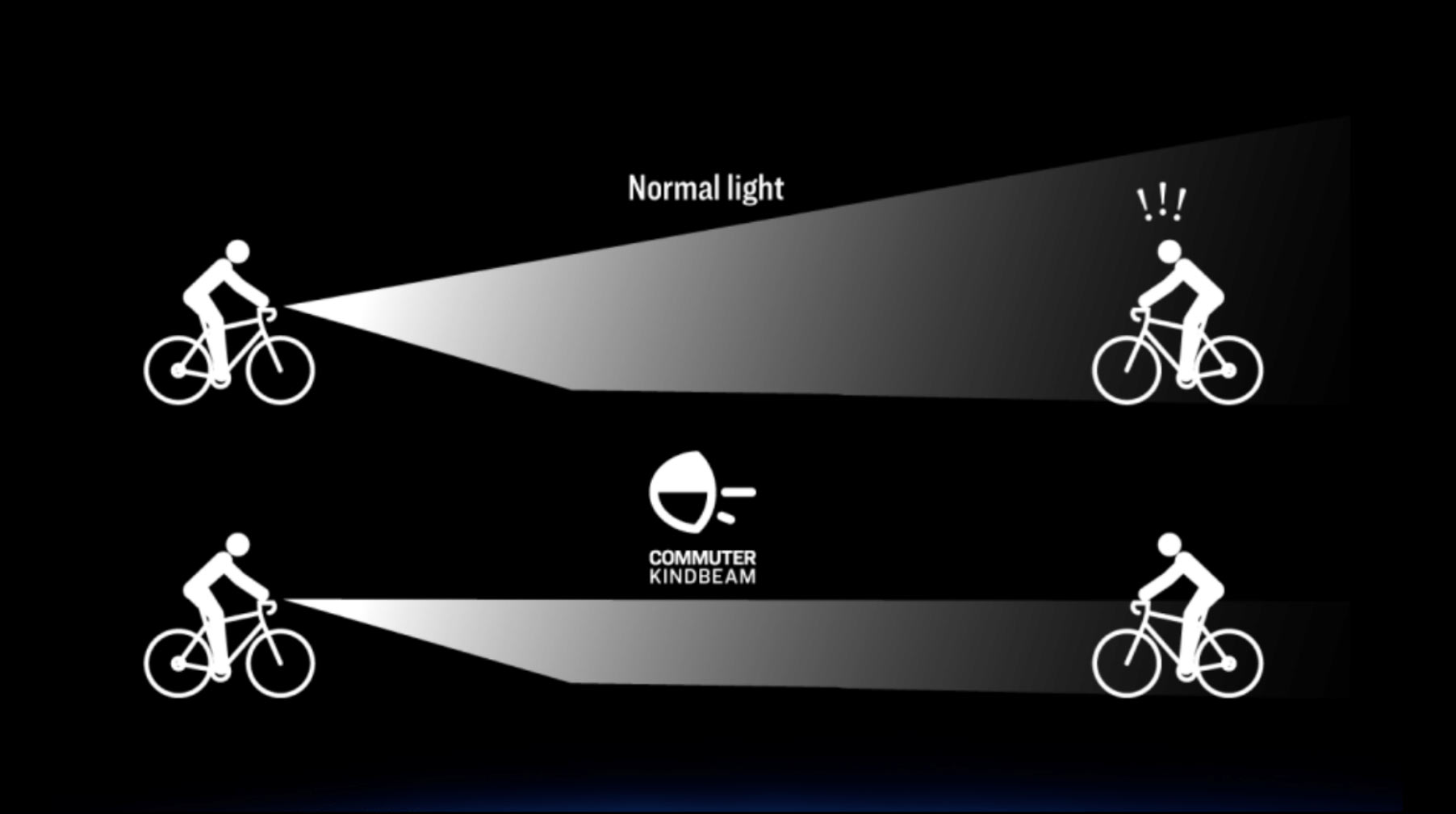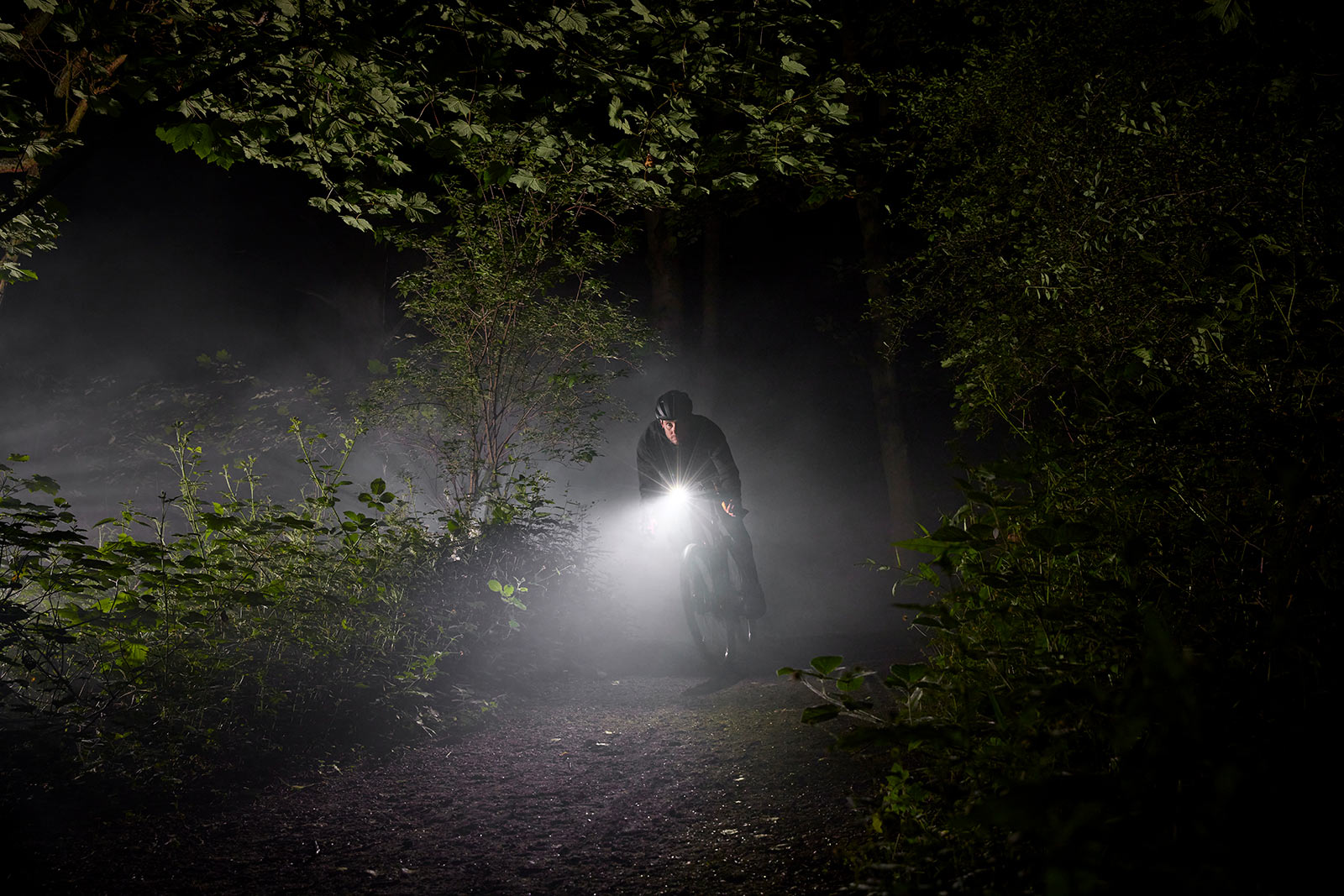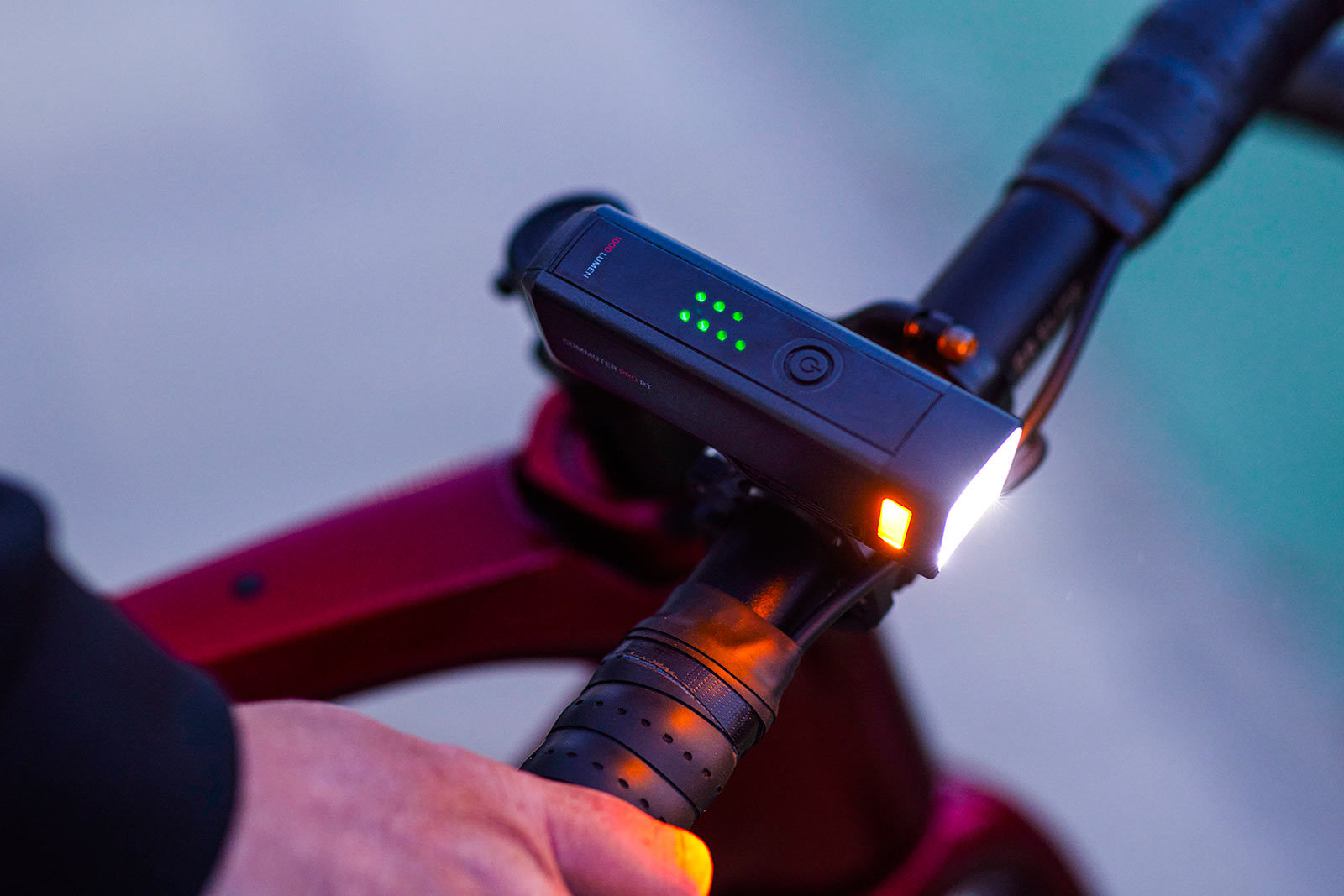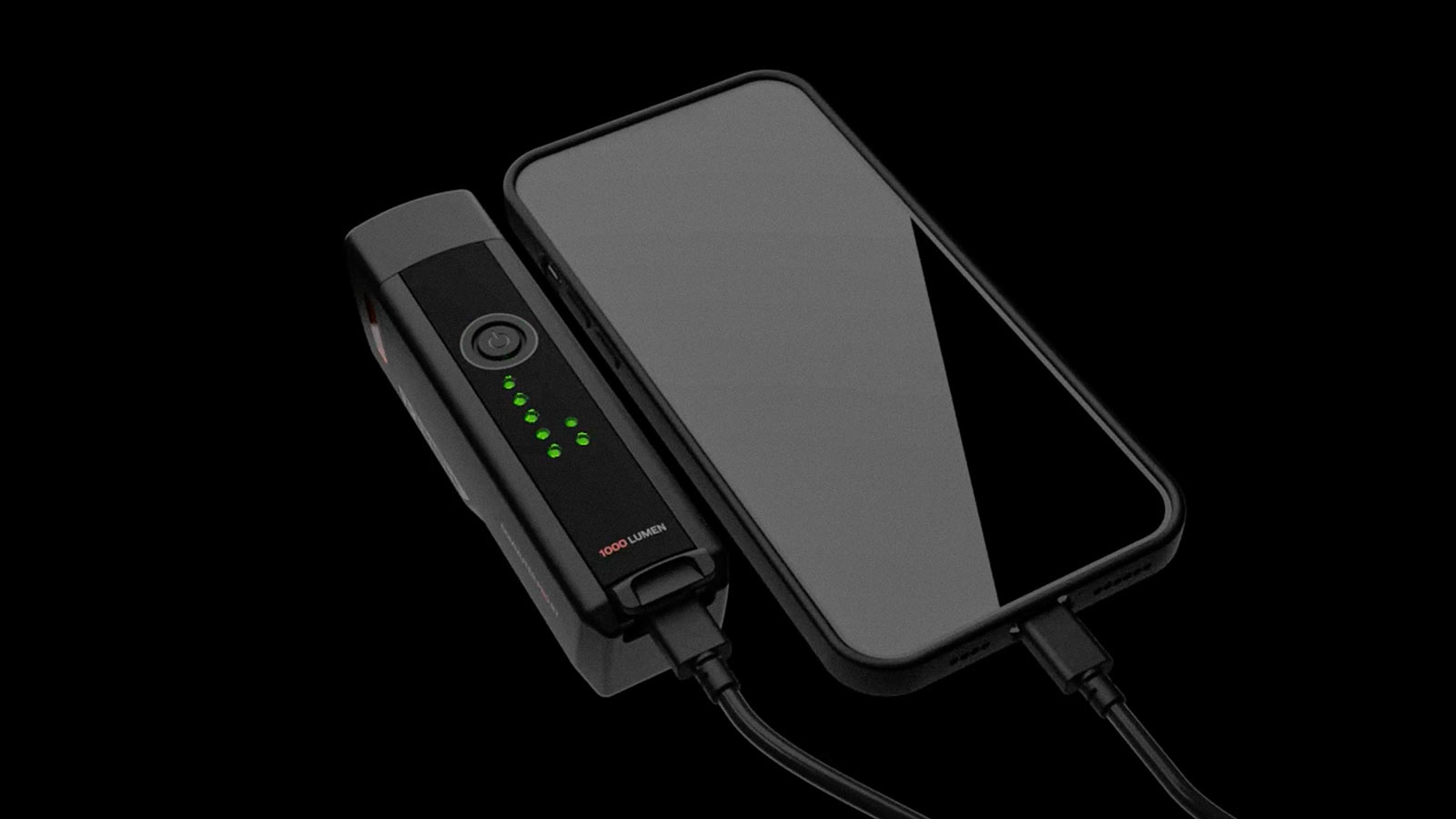The new Trek Commuter Pro RT headlight makes commuting by bicycle safer for you and other riders and drivers by cutting off the beam before it can blind them.
More than that, the light adds other useful features for commuters and bike touring fans alike and works well with their tail lights, too.
Called the “Commuter Kindbeam”, its revised beam pattern keeps the light where you need it to see the road, path, or trail ahead, but keeps the beam aimed low, well below eye level of oncoming traffic.
And by traffic, they mean cars, pedestrians, and other cyclists. It lets you see where you’re going without distracting or blinding others.
A High Beam mode switches to full coverage so you can see more of your surroundings in low-light areas where oncoming traffic isn’t a concern. Meaning, it’s a great option for those long gravel and adventure rides that may inadvertently end with you riding home in the dark.
During broad daylight, though, a flashing mode provides plenty of visibility so that oncoming vehicular traffic sees you well in advance.
Side marker lights help others see you from cross streets and can even lightly illuminate more of your surroundings.
It’s an “RT” model, so it pairs with their RT tail lights so you can remotely turn those on and off with a single button from the headlight. On top are battery level indicator lights that show the remaining battery of both the headlight and the paired tail light.
The USB-C charging port works both ways, so you can keep your phone or GPS cycling computer charged up while riding. The light itself will give you 3 hours run time on Low (500 lumens), 1.5 hours on High (1000 lumens), and 12 hours on Daytime Flash (300 lumens).
It comes with a standard clamp-on handlebar mount for $159.99, or bundled with the Flare RT tail light for $209.99. A BLENDR mount for attaching it directly to their BLENDR stem faceplate mounts (and under your cycling computer) is available separately ($9.99). It’s IPX4 weather resistant and recharges in 5 hours.
Beneath this top Pro RT model is a Comp ($69.99) option that delivers longer run times but fewer features and maxes out at 450 lumens.
